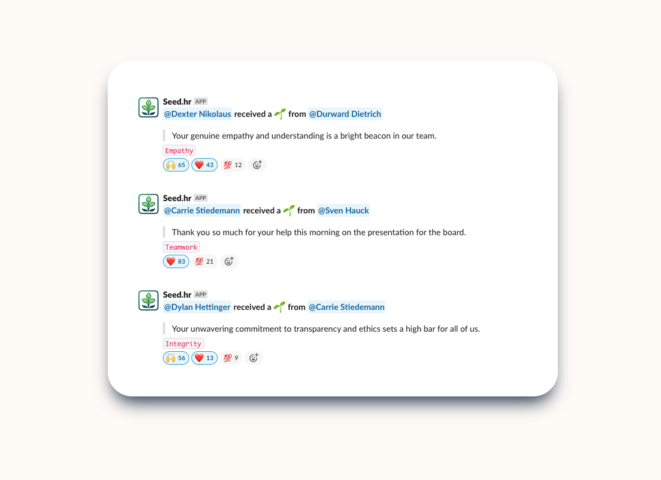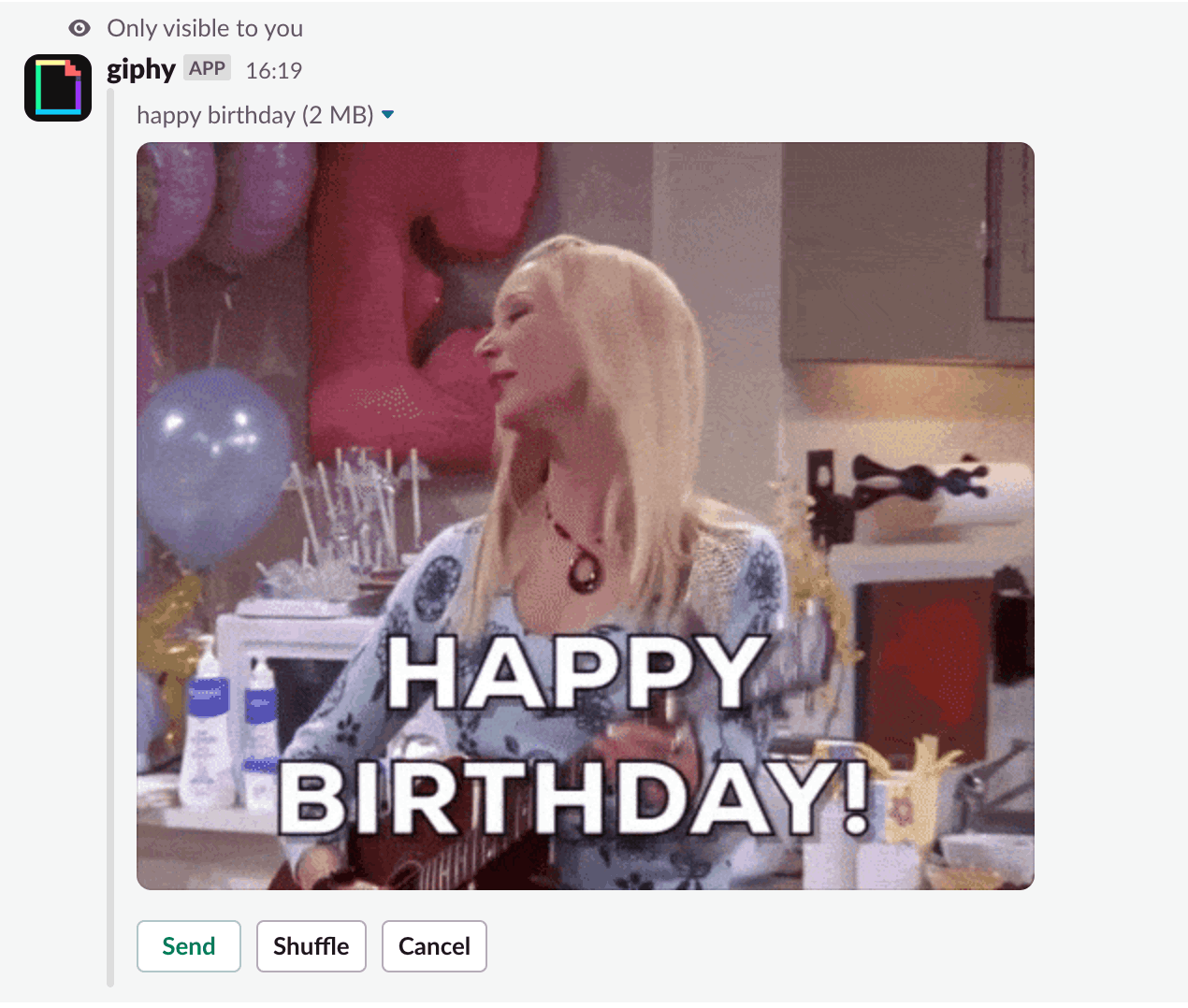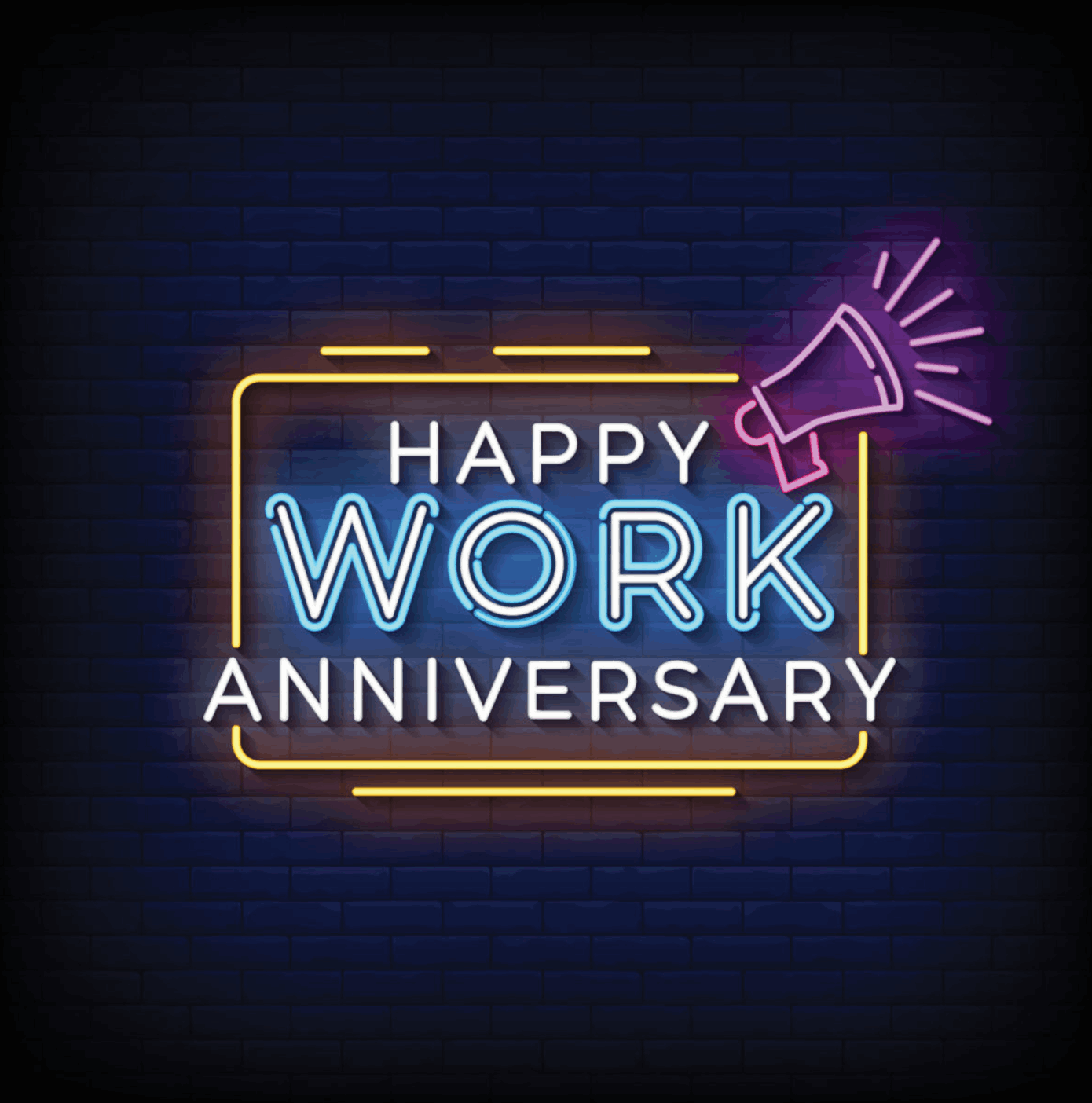Create a culture of recognition at work in 2024

Key takeaways
Employee recognition boosts two primary HR KPIs: Employee Performance and Retention.Peer-to-peer recognition is the most effective form of recognition, superior to top-down/direct-report recognition.Dedicated employee recognition software helps you ensure everyone is recognized regularly.
What is employee recognition?
Employee recognition is the act of appreciating and acknowledging the contributions and efforts of employees that further a company’s goals and values. It can range from verbal/written praise to tangible rewards. Done right, it creates an environment where individuals feel valued and motivated, enhancing workplace morale and driving engagement.
Why is employee recognition so important in the workplace?
Employee recognition is vital in the workplace as it boosts two primary HR KPIs: Employee Performance and Employee Retention. Recognized employees are 4x as likely to be engaged, leading to enhanced productivity. They are also more likely to stay with the company, reducing turnover. Let’s see that in detail!
Employee performance: recognition is a primary driver of motivation
As an HR Leader, you might often ask yourself how to motivate your people to be more productive. I bet you would not be surprised with the result:

You read that right! Recognition is way ahead of all drivers of great work. But that’s common sense, right? Who wants to work for a company that doesn’t recognize their great work?
Well… that’s not what the leadership prioritizes: according to Gallup, 81% of top executives say recognition is not a major strategic priority for their company. 81%! (I hope you’re not part of that group, you who are reading this article)
Continuing on employee performance, Deloitte found that performance, productivity, and employee engagement were 14% higher in companies with recognition programs.

Finally, recognition fosters company culture, boosts morale, strengthens teamwork, and nurtures relationships. Particularly, peer-to-peer recognition establishes a connection among team members, leading to enhanced collaboration between team members and increased group work productivity. So, recognition is not only about optimizing individual productivity but also about optimizing efficiency both within teams and among different teams.
Employee retention: a happier workforce leads to decreased turnover cost
Employee recognition is one of the best “low-cost, high impact” initiative you could run in your company. By creating a strong culture focused on recognizing employees for their good work, companies can save millions of $. In fact, a 10,000 person company can save up to $16.1 million in turnover costs annually. That’s not even including the cost savings from increased engagement or productivity!
People may take a job for more money, but they often leave it for more recognition.Dr. Bob Nelson, best-selling author and motivational speaker
In a survey titled Using Recognition and Other Workplace Efforts to Engage Employees, 68% of HR leaders stated that employee recognition has a positive impact on retention, while 56% said such programs can also aid in recruitment. This means an employee recognition program will not only help you reduce turnover costs but could also assist in lowering your cost per hire. Indeed, recognized employees are 4 times more likely to recommend their company as a great place to work.
When and how should you recognize employees?
Wondering whether you’re recognizing your employees the right way? We might have some answers for you!
The 3 types of employee recognition
- Top-down recognition: When a manager or senior individual acknowledges employees subordinate to them in the organizational hierarchy. This is the predominant form of employee appreciation. It usually isn’t personalized since it often involves recognizing a group or an entire team.
- Direct-report recognition: When an individual is acknowledged by their direct manager, typically during a one-on-one meeting.
- Peer-to-peer recognition: When one employee recognizes the work and efforts of another colleague. Peer recognition has a 35% greater positive impact than manager-only recognition.
The 4 main triggers of recognition
- As it happens (day-to-day): Day-to-day acknowledgments remind staff that their daily contributions are valued, fostering a consistent morale boost. Whether it is a simple “thank you for helping me achieve X” or a small achievement a person has made, recognizing employees in real-time reinforces positive behavior immediately, making it more impactful.
- Exhibiting desired behaviors: Recognizing employees when they demonstrate company values or desired behaviors strengthens the company culture. By praising these behaviors, it sets clear examples of what is expected and appreciated within the company.
- Above-and-beyond expectations: Recognizing employees who go the extra mile highlights their dedication and can inspire others to push their limits. Such acknowledgments ensure that outstanding efforts don’t go unnoticed, motivating employees to consistently deliver their best.
- Milestones such as tenure: Celebrating tenure milestones honors an employee’s loyalty and commitment to the company over the years. These recognitions not only reward longevity but also foster a sense of belonging, indicating to employees that their time and dedication are deeply valued.
Be specific
Being specific when recognizing someone’s work is crucial because it demonstrates genuine awareness and appreciation of their efforts. That’s what makes a difference! Generic praises can often come across as insincere or disconnected, potentially diluting the intended motivational effect.
For example, don’t say, “Good job on the project.” Instead say, “Great job on the project! The design layout you chose was visually compelling, and your detailed analysis in the report provided valuable insights. It really made our presentation stand out to the stakeholders.”
Make it public
First things first: consider individual preferences. Some people don’t like to be praised publicly, while a majority of them do.
We all know the phrase: “Praise in Public, Criticize in Private”.
What is cool about praising in public on a dedicated virtual space (like a Slack/Teams channel) is that it fosters a culture of praising people and encourage others to do the same!

Recognize regularly
If you’re reading this article, chances are you want to create a culture of recognition so I shouldn’t have to argue a lot about this one. I’ll do it anyway.
Recognizing someone’s great work a few times a year is not enough. It has to be a few times a month minimum in order to be effective. Don’t be like these companies where only 23% of employees strongly agree they get the right amount of recognition for the work they do.
3 ways to launch your recognition program today
Ok, so now, you’re convinced that you need to start your recognition program but don’t know the steps to follow. We got you covered! Depending on the effort you’d like to put in this initiative, your company size and budget, you have 3 options.
1. Dedicate a moment in your all hands meeting
This will only work if you’re a small company (< 30 employees) and if you have a weekly all-hands meeting. If your all-hands cadence is bi-weekly, it could be acceptable, but monthly is too infrequent to recognize people. As we saw earlier, people need to be recognized multiple times a month.
This will also require some personal preparation and coordination ahead of the meeting to prevent it from regularly being a flop, or you’ll stop doing it.
2. Establish a dedicated Slack/Teams channel for recognition
Your next best option is to set up a dedicated Slack/Teams channel where team members can freely recognize their peers. Popular names for such channels include #shoutouts, #recognition, and #kudos. This approach scales effectively for up to 100 people with discipline, but some companies find its effectiveness diminishes with groups larger than 50.
You might wonder why there’s an upper limit. The primary challenge is consistently reminding individuals to use the channel, fostering a habit, and embedding it into the company culture. While many employees initially embrace this initiative with enthusiasm, activity in the channel can wane over time. It’s not uncommon to see a noticeable drop in posts after a couple of months, with weeks going by without a single acknowledgment.
3. Install dedicated employee recognition software
Now that you’ve experienced the limitations of options 1 and 2, you might consider evaluating employee recognition software. But what’s crucial in a recognition software? It’s its ability to help you establish a habit within your company by offering features that maximize adoption.
Such features generally include:
- Rewards: Your employees will earn points whenever they receive and/or give recognition. They can redeem these points for monetary or non-monetary rewards. (more on this in our article 40+ ideas)
- Leaderboards: Your employees will be ranked based on how much recognition they have sent/received.
- Feedback Friday: Every Friday, automated reminders will be posted in public channels and/or sent via direct messages to remind everyone who hasn’t sent recognition yet this week to do so.

Here, you’ll have to decide whether a feature will fit your company culture. For instance, some companies don’t like to offer monetary rewards for recognition as they believe recognition shouldn’t be incentivized. However, rewards can be an excellent method to kickstart the initiative and gain initial buy-in from all your employees. It could be used temporarily.
If you’ve read this article up to this point, well, congratulations! Chances are you’re not part of the 81%. (If you don’t get it, read the article again.)
Now you have everything you need to create a culture of employee recognition.
We hope to see you soon signing up for the free trial of Clappy Kudos!




